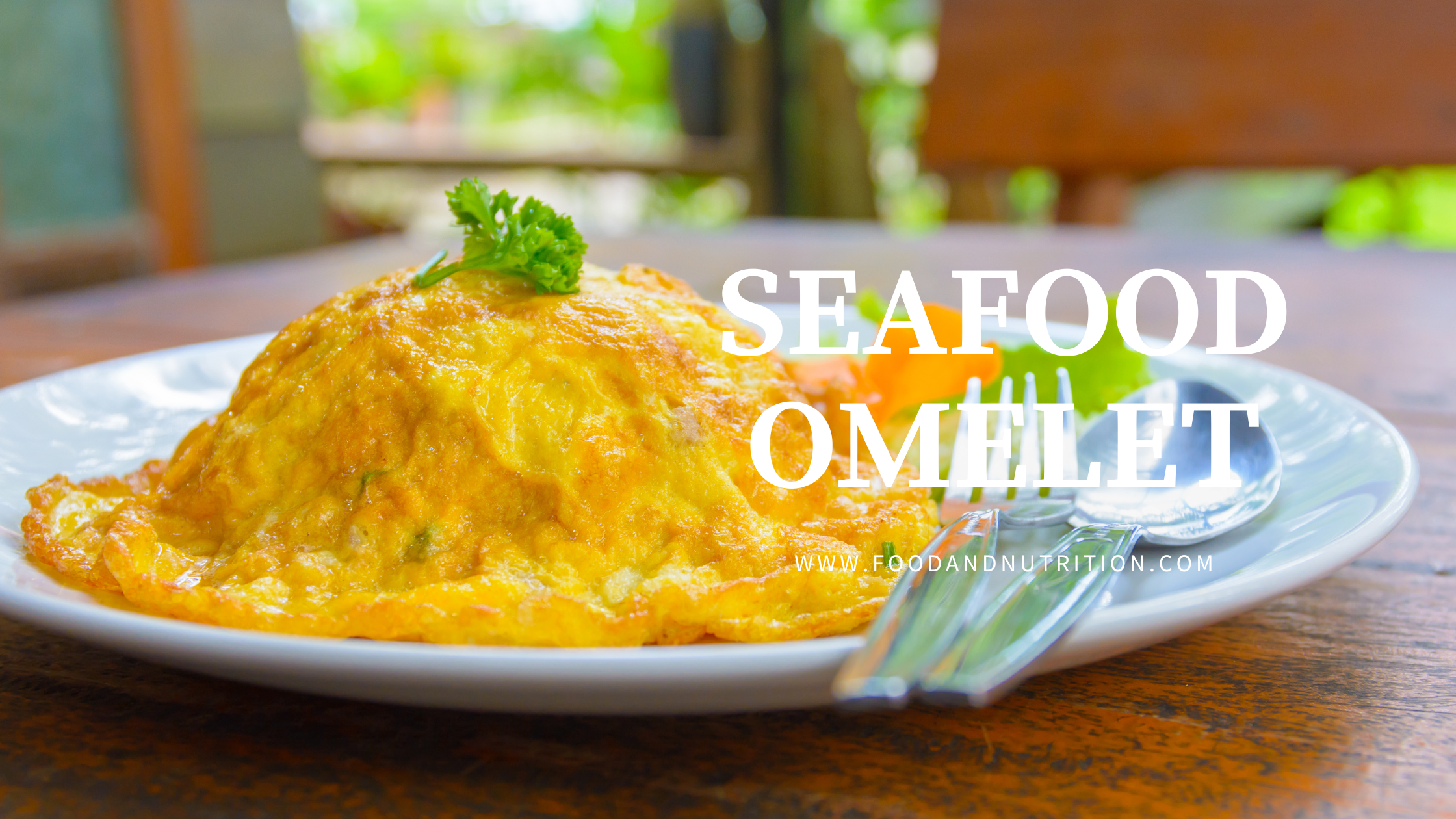The Irresistible Seafood Omelet: A Culinary Delight Worth Trying!

There’s something undeniably special about a perfectly cooked omelet, with its fluffy texture and endless possibilities for filling variations. Today, I want to introduce you to a sensational twist on this breakfast classic—the Seafood Omelet. This delightful creation combines the delicate flavors of shrimp, crabmeat, and scallops with the richness of eggs. Join me on a journey to explore the history, popularity, nutrition, and serving ideas for this irresistible dish.
The History of the Seafood Omelet
Omelets have been a beloved dish for centuries, with roots dating back to ancient Persia. Over time, variations of this dish have emerged across different cultures, each with its unique twist. While the precise origins of the seafood omelet are unclear, it has become particularly popular in coastal regions where fresh seafood abounds.
The Popularity of the Seafood Omelet
Why has the seafood omelet captured the hearts and palates of so many food enthusiasts? The answer lies in the combination of two culinary favorites: eggs and seafood. Eggs are a versatile ingredient, providing a creamy texture and acting as a canvas for other flavors. Seafood, on the other hand, offers a delicate and briny taste that pairs perfectly with eggs.
Common Ingredients in a Seafood Omelet
To create this mouthwatering dish, you’ll need a handful of ingredients. Begin with a base of beaten eggs, whisked until light and fluffy. Then, gather some fresh mushrooms, thinly sliced, and melt butter in a sauté pan to cook them until tender. The star of the show is the seafood trio: bay shrimp, lump crabmeat, and sea scallops. These ingredients bring a delightful oceanic essence to the omelet. Finally, don’t forget the scallions, salt, pepper, and sharp cheddar cheese to enhance the flavors and provide a touch of richness.
SEAFOOD OMELET
Ingredients
- 2 tablespoons butter
- 2 ounces mushrooms thinly sliced
- 4 each eggs — beaten
- 3 tablespoons bay shrimp
- 1 ounce lump crabmeat
- 2 ounces sea scallops
- 2 tablespoons scallions — chopped
- salt and pepper — to taste
- 2 tablespoons sharp cheddar cheese — grated
Instructions
- In a sauté pan, melt the butter over medium heat. Once the butter is bubbling, add the mushrooms and sauté until soft.
- Pour the beaten eggs into the pan, then add the bay shrimp, lump crabmeat, scallops, and half of the chopped scallions. Stir constantly until the eggs are almost cooked but still slightly watery.
- Season with salt and pepper according to your taste.
- Sprinkle the grated cheddar cheese and remaining scallions over the omelet.
- Place the pan under the broiler and cook until the cheese is melted and lightly golden.
- Serve the seafood omelet open-faced on a large round plate for a stylish presentation.
Notes
Nutrition Profile of the Seafood Omelet
Not only does the seafood omelet tantalize your taste buds, but it also offers several nutritional benefits. Eggs are an excellent source of high-quality protein, essential vitamins, and minerals like vitamin B12, vitamin D, and selenium. Seafood, including shrimp, crabmeat, and scallops, is rich in omega-3 fatty acids, which promote heart health and reduce inflammation. Additionally, the incorporation of mushrooms provides fiber, B vitamins, and immune-boosting properties. When prepared with moderation and balanced ingredients, the seafood omelet can be a nutritious addition to your diet.
Serving Ideas to Elevate Your Seafood Omelet Experience
Now that you’re eager to savor this delectable dish, let’s explore some serving ideas that will elevate your seafood omelet experience. Consider serving it open-faced on a large round plate, family-style, for an impressive presentation. Accompany it with a side of fresh mixed greens dressed in a light lemon vinaigrette to provide a refreshing contrast. For brunch gatherings, pair the seafood omelet with crispy oven-roasted potatoes or a slice of artisanal bread. Complete the meal with a glass of chilled sparkling water infused with a hint of citrus for a crisp and clean palate cleanser.
In Conclusion
Seafood omelet’s is a culinary masterpiece that seamlessly blends the richness of eggs with the delicate flavors of shrimp, crabmeat, and scallops. With its rich history, widespread popularity, and enticing nutritional benefits, it’s a dish worth exploring. So, put on your apron, gather the ingredients, and embark on a flavorful adventure by creating your own seafood omelet. Whether you enjoy it for a leisurely weekend breakfast or a memorable brunch with friends, this dish promises to satisfy both your taste buds and your desire for an exquisite dining experience.
- Unlock Classic Marinara Sauce: A Flavorful & Nutritious Guide
- Embracing Summer: The Ultimate Watermelon Feta Salad with Tomatoes & Olives
- Rediscovering Lebanese Salad: A Refreshing Delight with a Rich Heritage
- Eating Your Way to Healthy Blood Pressure: A Guide to Lowering Hypertension
- Perfect Roasted Leg of Lamb: A Timeless Delight for Your Table
- Romesco Sauce: A Flavorful Spanish Delight That Elevates Every Dish
